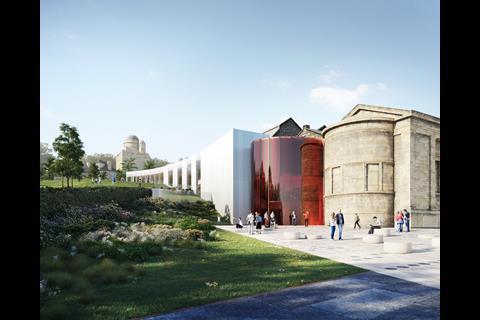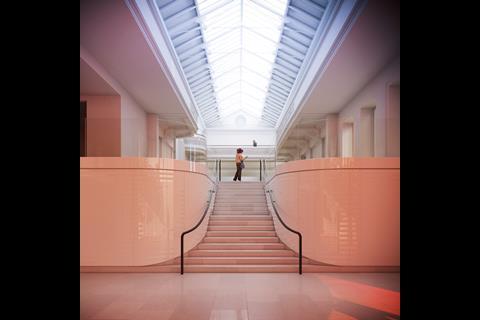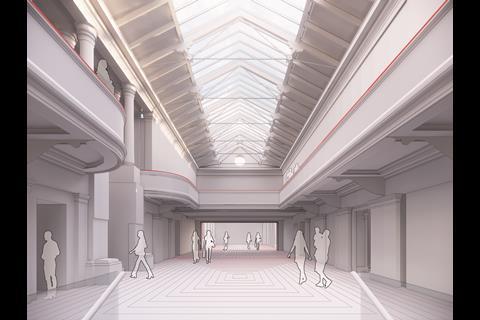Council imposes series of requirements on contractors amid coronavirus crisis
Contractors have been put on notice for the job to build the extension of Paisley Museum in Scotland designed by Stirling Prize winner Amanda Levete’s practice AL_A.
The £42m project to extend the grade A-listed building was given the go-ahead by Renfrewshire council in October last year.
Now the council is looking for a firm to carry out the £21m main contractor role but is looking for financial guarantees given the economic trouble caused by covid-19.
The council said: "In the current difficult economic environment, the council seeks to ensure that the contractor who undertakes the works has suitable financial strength and capacity to complete these works.
"The council will require bidders to have a yearly turnover of £42m and to evidence this level of turnover in the previous three years."
Any firm that does not meet this criteria will be excluded from the procurement process.
The council said it would also want firms to be able to evidence where possible that they have a Dun and Bradstreet (D&B) failure score of no less than 30. A Dun and Bradstreet score predicts the likelihood that a business will, in the next 12 months, seek legal relief from its creditors or cease business operations without paying all its creditors in full.
The council said: "The council recognises that many businesses have been directly affected by the coronavirus pandemic and therefore may be unable to meet the D&B score.
"Where an economic operator wishes to be considered for selection under this contract but cannot meet the D&B score, that economic operator must provide financial information which will satisfy the council that they have an equivalent level of economic and financial standing and must provide related guarantees or formal assurances to support their right to participate and be considered for any contract award."
Contractors have until the 13 November to register their interest in the project.
Improvement work will include a new entrance courtyard and entranceway, along with a new west wing, outdoor garden space and an interactive weaving studio.
The museum is expected to re-open in 2022. Opened in 1871, it was designed by Glasgow architect John Honeyman.




















1 Readers' comment